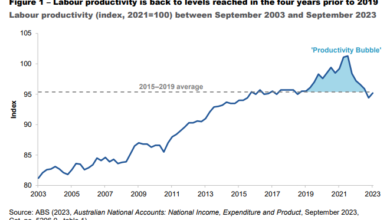Despite lifting Australia wine tariffs, China’s market offers no lifeline for global industry

“The market has shrunk hugely in terms of consumer interest in wine, and that’s not showing any signs of reversing post Covid,” said Kym Anderson, executive director of the Wine Economics Research Centre at the University of Adelaide.
Part of the problem is that it’s lost that halo
China’s “apparent consumption” of wine in 2023, which includes imports and domestic production, was barely a quarter of its peak in 2017, with annual import volumes shrinking two-thirds over that period, he added.
At the same time, more domestic and global players have crowded into the market, with many alcoholic drinks besides wine also on offer, said Judy Chan, chief executive of leading domestic winemaker Grace Vineyards.
“Now we see more cocktails, craft beers, there’s so many more choices for consumers,” she said.
“Wine … had this halo of international sophistication. Part of the problem is that it’s lost that halo.”
China-Australia wine trade to resume as Beijing nixes tariffs after 3 years
China-Australia wine trade to resume as Beijing nixes tariffs after 3 years
Grace, set up more than 25 years ago in the northern province of Shanxi to make wine, has also started making gin to diversify its offering.
China’s alcohol market is the world’s biggest, estimated at US$336 billion, though a fiery domestic spirit, baijiu, dominates it.
And efforts to claw a bigger share for foreign beverages have been stymied by consumer malaise after Covid-19.
Although the consumer confidence index rose by 1.5 per cent in January on the month, it is hovering near historic lows as China’s economic slowdown, sluggish property market and high youth unemployment damp discretionary spending.
China is so difficult, the environment is so hard
Yan Yu, who uses social media app WeChat to sell wine directly to clients, most of them middle-class, said they had become more price sensitive since the pandemic, with the most popular price point for her wines below 200 yuan (US$28).
“China is so difficult, the environment is so hard,” said Yu, who is based in the commercial hub of Shanghai.
“I need to find people who haven’t tried wine yet and are curious. That’s how I grow business. You just have to compete.”
Yet the market at the top end remains stronger, Chan said, with people ready to buy high-end wines of good quality.
“I think Penfolds will do really well,” she said, referring to the most famous brand of Australia’s top wine producer, Treasury Wine Estates, as it returns to China.
“People are willing to pay for a recognisable wine brand like that.”
While exceptional offerings such as Penfolds are likely to receive a fillip, the re-entry of Australian wines to China will be tough for many other producers already battling serious issues of oversupply.
Critics score Penfolds’ first made-in-China wine, priced at US$100 a bottle
Critics score Penfolds’ first made-in-China wine, priced at US$100 a bottle
They will shrink market share for nations such as France, Chile and Italy that benefited from their absence to become the leaders of China’s US$1.6-billion import market, with shares of 48.24 per cent, 19.31 pe cent and 10.1 per cent respectively in 2023.
And Australia’s 2015 free-trade deal with China frees up its wine shipments, giving it a 14 per cent tariff advantage over many nations.
Still, ramping up Australia’s export capacity to China will need time, and imports in a shrinking overall market are unlikely to quickly reach 2019’s pre-pandemic figure of A$1.2 billion (US$790 million).
There’s no reason why we shouldn’t have expected the same type of growth in consumption of wine to continue in China
That is not to rule out hopes for China’s wine market to grow, with Chan betting on a stabilisation, even though she fears the peak has probably passed.
Anderson said there was room for growth as annual adult consumption stands at less than half a litre and wine accounts for less than 1.5 per cent of all alcohol consumption in China.
Still, it was “confounding” that China had overturned normal expectations for the growth of wine-drinking in a developing market.
“Given the growth in incomes, and what we have seen from many other countries and cultures, there’s no reason why we shouldn’t have expected the same type of growth in consumption of wine to continue in China,” he said.




